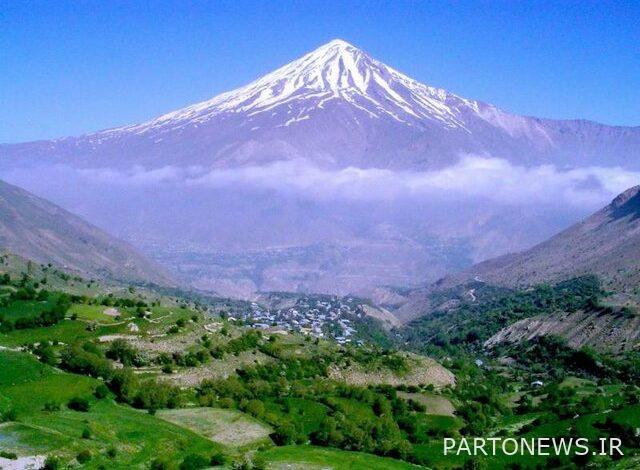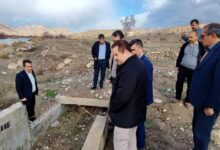What has happened to ecotourism in Iran?

Ali Shadlou, an ecotourism activist, says: “Iran’s multi-owner and perhaps non-owner eco-tourism has not only degraded its organizational structure and position, but also damaged all the natural monuments of the country, a clear example of which is Damavand Mountain.”
According to ISNA, the tourism instructor released a video on the fate of ecotourism in Iran, saying: “The structure of private ecotourism organizations in Iran is facing a lack of legal mechanism and regulations and instructions for ecotourism and ecotourism are exhausted and uncertainty of nature trips, especially Instead of serving nature and nature tourism in Iran, Aphrodite has suffered and the natural heritage has become multi-owner and even ownerless.
He stated that Iran’s nature, where it has the greatest biological capacity, both living and non-living, is functionally and practically in the management of the Environment Organization of Iran, he said: Not to use government funds to maintain environmental capacity.
Shadlow added: “The new paradigm of protection or, in a better language, protection of nature, has emerged in the world for many years by changing the view of protection based on the lack of human access to natural capacities as opposed to protection based on human entry into natural areas.” A clear example is the safari in the parks of Africa. Wildlife hunters, even large cats, recognize tourists’ cars and take refuge and hunt alongside them. Identification, wildlife is also preserved.
When Lar National Park opens to tourists, it is only a place of regret; A train enters the park by car, neither the rules defined, nor the mode of operation set, Stowe noted. But also in the life of plant species and especially in inanimate life and the capacities of the tourism land.
The tourism instructor continued: “In Iran, due to protected areas and the lack of dissemination of protection science based on human entry, we do not have access to about 10 to 15% of Iran’s territory, because they are national parks.” The fact that some people say that we do not have access to these areas to create tourism infrastructure is a detailed discussion. For example, when Lar National Park is opened to tourists, it is just a place of regret. Is. There are many examples of this in other natural and national fields.
Referring to the indifference to the pattern of settlement and movement in Iran, which has natural bio-value with the least damage, Shadloo added: It is the most sustainable and ecological habitat in areas with conservation value and natural heritage. However, we have invited a professor from Australia and asked him what model to follow in Iran, while the same Iranian model has been used in Africa. It’s a really sad place.
He then referred to the end of the Iranian Nature Tourism Organization and said: “The Cabinet passed a resolution in favor of establishing a National Nature Tourism Committee, according to which this committee consisting of three organizations of natural resources, environment and cultural heritage, should develop the ecotourism industry in Iran.” But multi-organizational and multi-stakeholder, it never brought that national committee closer to its core function. Of course, there were outputs in the body of tourism, but at the national level, where the arenas had to be assigned and prepared for the arrival of tourists, we have not achieved a defensible success in the cooperation of these three organizations.
The ecotourism activist added: “As a result of the Cabinet’s decision, the General Directorate of Nature Tourism was established in the Deputy of Tourism of the then Cultural Heritage and Tourism Organization, which was once a multi-storey organization on Valiasr Street in Tehran. It no longer has a director general, a deputy director or an expert, and this is a bad thing.
Shadloo continued: When the experts of the World Tourism Organization and the World Trade Organization stepped into our country to help draft a strategic document for the development of tourism in Iran, which was a large management gap, after traveling and studying, the focus, dignity and competitive advantage and growth of tourism in Iran They saw in ecotourism. They said that the main and biggest challenge for the development of ecotourism is the lack of legal, organizational and upstream relations in coordination with two or three organizations in charge of nature in Iran. Natural resources are at the disposal and if the tourist enters, it is the responsibility of the Ministry of Tourism. Damavand Mountain is in the same situation. In fact, all the natural monuments of the country are damaged in the face of unmanaged and unruly tourism.
He added: “When those international experts came to Iran, they talked about the principle of multi-owners in the development of ecotourism in Iran as a problem, and in the next phase, they pointed out the lack of a unanimous class.” Ecotourism activists, including eco-lodges, conservation-oriented and community-based destinations, all of these eco-based areas of development are multi-voiced and do not even have a professional, national organization.
A clear example of Iran’s ecotourism is Rudafshan Cave, which is a natural-national monument under the supervision of the environment, its property is in the possession of natural resources, and if a tourist enters, it is the responsibility of the Ministry of Tourism. Damavand Mountain is in the same situation. This ecotourism activist said: In the previous government, the Deputy Minister of Tourism, who was once the Director General of Evaluation and Supervision, issued a regulation to reform trade union behavior and trade union movements in tourism, but our problem is that tourism is not up to date. There is no difference between ecotourism agencies and ordinary, ecotour operators are not distinguished from tour operators in any way. The eco-tourism that went astray was supposed to be “ecology” translated as “ecology”, which went to rural tourism, livelihood-oriented and entrepreneurship, and its subject was job creation and its concern was borrowing, and it was something else.
Shadlow addressed these problems in another way: For example, health tourism, which is good and earns money, benefits the Ministry of Health, or sports tourism, which is the responsibility and benefit of the Ministry of Sports. Recently, a scientific association for nature tourism has been established in the heart of the Ministry of Science. In fact, the body of the tourism union is distributed among other devices.
He added: “These multi-organizations and multi-owners are destroying the tourism industry.” It shows that in the field of nature tourism, which according to the experts of the World Trade Development Organization and the World Tourism Organization, is the main axis of Iran’s tourism development, the most important stutter is that the National Committee for Nature Tourism was not formed under the Cabinet regulations and had no output. The water has been reduced to the level of an expert, on the other hand, the National Association of Nature Tourism has not been formed, and none, the Scientific Association of Nature Tourism has been formed in the heart of the Ministry of Science.
The tourism instructor said that the natural area with ecotourism development value under the National Committee for Ecotourism should have been assigned, but failed. Which did not give and the realization of these is our demand.
Shadloo said: “In areas such as Kavir National Park, Miankaleh and Fereydunkenar, when the place of income-generating tourism industry is empty, illegal hunting and harvesting, hunting, destruction and fire are replaced.” If the National Association were to be set up, the National Committee for Nature Tourism and the General Directorate of Nature Tourism would be activated. Today’s issues are not the cornerstone of the growth of nature tourism and ecotourism. Many stutters could be removed this way, but we are still in the alley.

